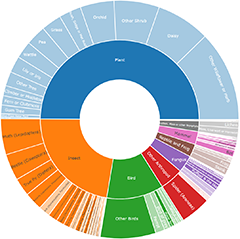Jelly-like; smooth, featureless surface
This sub-group holds those gelatinous fungi, amongst the group commonly referred to as jelly fungi, that don’t fit into any of the previous categories. Those other jelly fungi may be:
Shelf-like
Stalk-like
Convoluted to brain-like
The fungi in this sub-group have smooth & featureless fruitbodies. If you have found a spotted and somewhat gelatinous fruitbody you probably have one of the soft-fruitbody species of Hypocrea, included in the next sub-group.
Announcements
There are currently no announcements.
Discussion
Teresa
wrote:
15 Apr 2025
Looks a little like a dehydrated Tremella sp.
Unverified Jelly-like; smooth, featureless surface
Top contributors
- trevorpreston 18
- Hejor1 12
- TimL 8
- JackyF 7
- KenT 5
- mahargiani 4
- Bushrevival 3
- Aussiegall 3
- RobG1 3
- Tapirlord 3
Top moderators
- Heino1 58
- Heinol 27
- Teresa 13
- Pam 7
- Heino 5
- MichaelMulvaney 5
- KenT 3
- Csteele4 3
- waltraud 1
- CanberraFungiGroup 1



